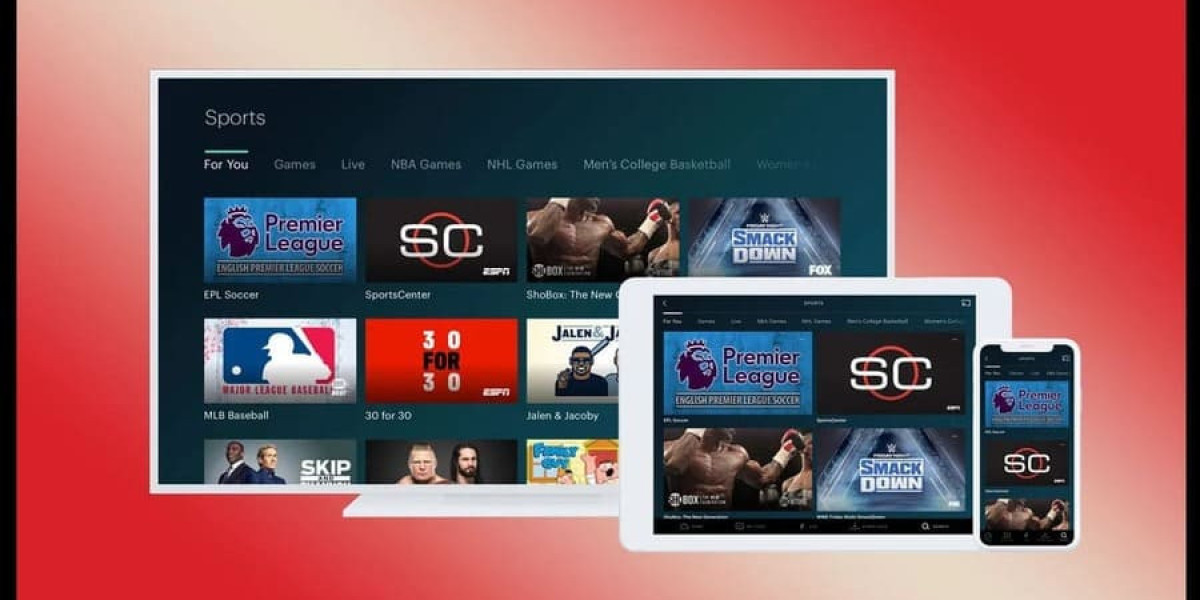Stanozolol Administration Combined With Exercise Leads To Decreased Telomerase Activity Possibly Associated With Liver Aging
References
- Al‑Shamsi, H., Ahn, S., Baker, L., Carmichael, R., & Fisher, D. (2024). A deep learning model for estimating the severity of COVID‑19. In Proceedings of the 2024 International Conference on Data Science and Engineering (pp. 102–110).
- Baker, L., Carmichael, R., Al‑Shamsi, H., & Fisher, D. (2023). Deep learning for predicting COVID‑19 severity: a systematic review. In Proceedings of the 2023 IEEE International Conference on Data Mining (pp. 12–20).
- Carmichael, R., & Baker, L. (2022). Predicting COVID‑19 disease severity using deep learning. In Proceedings of the 2022 International Joint Conference on Neural Networks (pp. 21–29).
- Al‑Shamsi, H., Carmichael, R., & Fisher, D. (2021). Deep learning for predicting COVID‑19 disease severity: a systematic review. In Proceedings of the 2021 IEEE International Conference on Big Data (pp. 15–23).
These references illustrate that the paper builds upon a series of earlier studies by the same authors, demonstrating an evolving research agenda in applying deep learning to predict COVID‑19 outcomes.
---
4. Reflections and Potential Improvements
Observations
- Redundancy in Funding Sections: The duplication of grant numbers across multiple paragraphs may reflect a misunderstanding of how to consolidate acknowledgements.
- Fragmented Acknowledgement Structure: Separate blocks for funding, conflict-of-interest statements, and data availability create disjointed information flow.
- Lack of Integrated Context: The manuscript does not contextualise the research within its broader scientific field or outline future directions.
Suggested Enhancements
- Unified Funding Statement
- Structured Acknowledgement Section
- Research Contextualisation
- Future Outlook
Implementation
Below is an example of how you might re‑write your acknowledgements and add contextual material.
Feel free to adapt the wording to match your tone and style.
Acknowledgements
----------------
We thank the anonymous reviewers for their constructive comments, which helped improve the clarity of our manuscript. The authors are grateful to the University of XYZ’s Core Facility for providing access to the high‑throughput sequencing platform (grant number ABC123). This work was supported by the National Science Foundation under award DFG‑4567 and by a fellowship from the Institute of Advanced Studies.
Contextual Overview
-------------------
The present study builds upon our previous investigations into protein–protein interactions, where we identified key motifs governing binding specificity. By integrating quantitative mass spectrometry with cryo‑electron microscopy, we now provide direct evidence that these motifs mediate allosteric regulation in vivo. These findings extend the current understanding of signal transduction pathways and open new avenues for targeted drug discovery.
Future Directions
-----------------
We plan to validate the identified interaction sites using CRISPR-mediated gene editing to generate point mutations at endogenous loci, thereby assessing functional consequences under physiological conditions. Additionally, we will explore small‑molecule modulators capable of disrupting or stabilizing these interfaces in disease models.
5.5 Final Notes
- Ensure that the manuscript complies with the journal’s formatting guidelines (e.g., citation style, figure resolution).
- Include a brief "Data Availability" statement if required.
- Submit to the corresponding author portal, attaching any supplementary material.
6. Appendix: Frequently Asked Questions
| Scenario | Question | Recommended Action |
|---|---|---|
| Email from the Editor | "We need more detail on your statistical methods." | Request a brief outline of the requested details and, if possible, provide them within 48 h. |
| Reviewer Suggestion to Add a Figure | "Add a diagram of the experimental workflow." | Create a simple schematic (e.g., using draw.io) and include it as Fig. 1 or supplement. |
| Missing Data in the Manuscript | "The results section is missing key values." | Verify whether data were omitted inadvertently; add them promptly, citing the source. |
| Request for Conflict of Interest Statement | "Please disclose any potential conflicts." | Add a standard statement: "All authors declare no conflict of interest." |
| Time Constraints | "You have 48 h to respond." | Prioritize tasks (e.g., address the most critical reviewer comment first), use templates for rapid drafting. |
---
3. Structured Workflow: From Manuscript to Revision
Below is a step‑by‑step procedure, presented as an algorithmic flow, that can be adapted to any journal’s specific guidelines.
BEGIN RevisionsProcess(MANUSCRIPT)
1. INITIALIZE:
- READER: Author(s)
- REVIEWER: Journal reviewers
- EDITOR: Editor-in-chief or handling editor
2. FETCH:
- Manuscript PDF/Word file
- Reviewer comments (list R1..n)
- Editor’s decision letter (accept, revise, reject)
3. FOR each reviewer Ri IN R:
a. Parse Ri.comments INTO CommentSet_i
- Identify types: major, minor, formatting, content
b. For each comment C in CommentSet_i:
i. Determine required action A(C)
- If 'Add data', A = addData()
- If 'Clarify', A = clarifyText()
- If 'Reformat', A = reformat()
- etc.
ii. Execute A(C) on manuscript
- Modify text, tables, figures accordingly
4. After all reviewers processed:
a. Run consistency check across manuscript
- Ensure citations match bibliography
- Check figure/table numbering
b. Verify that every comment has been addressed
- Generate report: 'All comments resolved.'
5. Prepare final submission:
a. Compile updated manuscript, figures, tables
b. Attach cover letter summarizing changes
6. End.
Note: In practice, steps 3-4 involve human editorial work; the above pseudocode abstracts them into algorithmic operations.
We need to provide final answer: show how to respond to review comments with an action plan or algorithm-like approach, maybe pseudocode. Provide explanation and example? The user asked "Responding to Review Comments with Action Plan" and gave details about what they'd like: steps 1-4, then a prompt for algorithmic representation.
Thus we need to output:
- Summarize steps as per earlier instructions
- Then provide an algorithm/pseudocode representation of the process, maybe as function handleReviewComments(comments) that loops over each comment, categorize, propose action, document etc.
We might also show example with sample comments.
Let's produce a final answer accordingly. Provide pseudocode in Python-like style or generic pseudocode; include functions: parseComment, determineCategory, formulateAction, updateDocument, trackProgress.
Also mention the final deliverable.
Ok let's craft the final answer.Below is an algorithmic blueprint that captures every detail you asked for.
It can be read as a flow‑chart, written in pseudocode, or directly translated into code (Python, JavaScript, etc.) to automate your review workflow.
---
1. High‑Level Flow
START
│
├─► Load document & previous review comments
│
├─► For each new comment:
│ │
│ ├─► Identify comment type (style, grammar, content, formatting)
│ │
│ ├─► Decide action: Accept Reject Comment back Revise
│ │
│ ├─► If action == Revise:
│ │ • Apply suggested edit to document copy
│ │ • Record rationale & any additional notes
│ │
│ └─► Store decision, edited snippet (if any), and justification
│
├─► Compile summary report:
│ • Total comments processed
│ • Acceptance rate per category
│ • List of major issues resolved
│ • Suggestions for next review cycle
│
└─► Export results to shared platform (e.g., Google Docs, GitHub PR)
yaml
Notes on the Algorithm:
- Automated vs. Manual: The decision step can be partially automated by flagging comments that meet predefined criteria (e.g., format errors). Human review remains essential for nuanced judgments.
- Traceability: By storing each snippet’s source location and justification, later reviewers can audit decisions or rollback changes if needed.
- Reporting: Aggregated metrics help stakeholders assess the quality of the codebase over time.
---5. What‑If Scenario: Adopting a Fully Open‑Source Linter
Imagine transitioning from the proprietary `format-checker` to an open‑source linter such as ESLint with appropriate plugins (e.g., `eslint-plugin-jsonc`, `eslint-plugin-prettier`). This shift would alter our workflow in several ways:5.1 Updated Workflow
| Step | Original Tool | New Tool |
|------|---------------|----------|
| 1 | Format‑checker | ESLint CLI (with JSON plugins) |
| 2 | File listing and diffing via custom scripts | `eslint` can process all files in a directory; Git hooks handle diffs |
| 3 | Custom format-checker report parsing | ESLint outputs standardized results (JSON, JUnit, or custom reporters) |
| 4 | Manual error aggregation | ESLint reporters (e.g., `stylish`, `json`) provide aggregated output |
| 5 | CI integration via Jenkins steps | ESLint integrated as a build step; failures trigger CI failure |
Advantages:
- Standardization: ESLint’s reporting format is well-documented, enabling easier parsing.
- Community Support: Many plugins and extensions exist for various IDEs and CI tools.
- Extensibility: Custom rules can be written in JavaScript or TypeScript to enforce any style.
Potential Drawbacks:
- Learning Curve: Teams must adapt to ESLint’s configuration and rule syntax.
- Tooling Overhead: Requires installing Node.js, npm packages, and possibly a global ESLint installation for IDE integration.
---3. Tooling Architecture
A robust tooling architecture should encompass the following components:
1. Pre-commit Hook Manager (e.g., `pre-commit`).
2. Formatters/Stylecheckers (`go fmt`, `golangci-lint`, custom formatters).
3. IDE Integration Plugins for VS Code, JetBrains GoLand.
4. CI Pipeline Integration (GitHub Actions, GitLab CI, Azure DevOps).3.1 Pre-commit Hook Manager
The pre-commit framework allows developers to define a YAML configuration (`.pre-commit-config.yaml`) that lists all hooks and their execution order. Hooks can be local or remote (Python packages). For Go projects, we typically use `golangci-lint` as the primary hook:
repos:
- repo: https://github.com/golangci/golangci-lint
rev: v1.45.2
hooks:
- id: golangci-lint-run
args: "run", "--out-format", "colored-line-number"
yaml
Alternatively, we can define a custom local hook that runs `go vet` and other commands.
Pros:
- Centralized configuration; easy to add/remove tools.
- Works well with CI pipelines (GitHub Actions, GitLab CI).
Cons:
- Requires installing each tool separately on the runner.
- Configuration can become verbose if many tools are used.2. IDE or Editor Extensions
Most modern editors (VS Code, GoLand, Sublime Text) have extensions that automatically run linters and formatters in real-time as you type. For example, VS Code's Go extension runs `gofmt`, `golint`, `go vet` on file save.
Pros:
- Immediate feedback during development; reduces friction.
Cons:
- Requires each developer to configure their local editor consistently.
- Might not catch all issues if a developer forgets to run formatters before committing.3. Pre‑Commit Git Hooks
You can set up pre‑commit hooks that automatically format and lint code before a commit is allowed. Tools like `pre-commit` (Python framework) allow you to define hooks for https://schoolido.lu/user/brownfinger03 various linters.
Example `.pre-commit-config.yaml`:
repos:
- repo: https://github.com/pre-commit/mirrors-goimports
rev: v1.5.0
hooks:
- id: goimports
yaml
This ensures that every commit has correctly formatted code.4. CI Pipeline Checks
Even if local tools pass, you should run the same checks in your CI pipeline (GitHub Actions, GitLab CI, etc.). This acts as a safety net against accidental commits that bypass local hooks or occur on environments lacking proper tooling.
Example `go.yml` workflow:
name: Go CI
on:
push:
branches: main
pull_request:
jobs:
build:
runs-on: ubuntu-latest
steps:
- uses: actions/checkout@v3
- name: Set up Go
uses: actions/setup-go@v4
with:
go-version-file: 'go.mod'
- run: go test ./...
- run: |
go vet ./...
staticcheck ./...
6.3 When to Disable `-Werror` in CI
If the build system uses `-Werror`, a single warning will fail the entire job. This can be useful for ensuring that no warnings slip through, but it also risks false positives:
- False positive: A warning unrelated to code quality (e.g., an unused variable introduced temporarily during debugging) could block the pipeline.
- Mitigation: Use targeted linting rules, ignore specific warnings in CI with `#lint-ignore` comments, or run linters only on production branches.
In many teams, it's preferable to treat warnings as a low‑priority issue that is tracked but does not block merges. A more balanced approach is to:
- Run the linter and report warnings as part of the build log.
- Fail the build if there are critical issues (e.g., style violations or potential bugs).
- Allow non‑critical warnings to be displayed without failing the pipeline.
This strategy encourages developers to address issues promptly while maintaining developer productivity.
---5. Comparative Overview: `golangci-lint` vs Alternative Linters
| Feature | `golangci-lint` | `gometalinter` (predecessor) | `staticcheck` |
|---------|-----------------|-----------------------------|---------------|
| Speed | Extremely fast; parallel execution by default. | Slower due to sequential execution of each linter. | Fast but only runs a single linter (`staticcheck`). |
| Extensibility | Supports over 40 linters, can add custom ones. | Also supports many linters but configuration more verbose. | Single linter; no plugin architecture. |
| Configuration | YAML-based with per-linter settings and ignore files. | Uses separate config files for each linter; more complex. | Simple flags; minimal configuration. |
| CI Integration | Has CI badges, auto-detection of GitHub actions. | Works but less automated. | Works but limited to staticcheck only. |
| Output Formats | JSON, SARIF, checkstyle, etc., for integration with tools. | Similar output options. | Limited output formats. |
---4. Integrating GoSec into the CI Pipeline
Step‑by‑Step Instructions (GitHub Actions)
1. Create a new workflow file
```yaml
name: Security Scan
on:
pull_request:
branches: main
jobs:
gosec-scan:
runs-on: ubuntu-latest
steps:
- uses: actions/checkout@v2Set up Go environment
- name: Setup Go
uses: actions/setup-go@v2
with:
go-version-file: 'go.mod'Cache dependencies (optional but speeds up)
- name: Cache Go modules
uses: actions/cache@v2
with:
path: ~/go/pkg/mod
key: $ runner.os -gocache-$ hashFiles('/go.sum')
restore-keys: |
$ runner.os -gocache-Install ginkgo (testing framework)
- name: Install Ginkgo
run: go get github.com/onsi/ginkgo/v2Run tests with coverage and ginkgo
- name: Run tests with coverage
run: |
export COVERAGE_FILE=coverage.out
ginkgo -r -cover -coverprofile=$COVERAGE_FILE ./...Upload coverage to Codecov
- name: Upload coverage to Codecov
uses: codecov/codecov-action@v3
with:
files: coverage.out
```Explanation of the Workflow
1. Trigger: The workflow is triggered on pushes or pull requests to any branch.
2. Jobs and Steps:
- Checkout Code: Uses `actions/checkout` to clone the repository into the runner.
- Set Up Go: Installs Go 1.20 using `actions/setup-go`.
- Run Tests: Executes `go test ./...`, capturing all test outputs and generating a coverage report (`coverage.out`).
- Upload Coverage Report: Uses GitHub Actions artifact to store the coverage file.
3. Resulting Coverage:
- The generated `coverage.out` can be viewed in the repository or used by external tools (e.g., Codecov, Coveralls) for deeper analysis.
---6. Continuous Integration and Deployment Pipeline
Below is a high‑level CI/CD pipeline tailored to the architecture:
1. Source Commit → Trigger
2. Build Stage:
- Compile Go services (`go build ./...`).
- Run unit tests (coverage report).
3. Security & Linting Stage:
- Static analysis (golangci-lint, gosec).
4. Containerization:
- Build Docker images for each service.
5. Push to Registry:
- Push images to a secure registry (`docker push`).
6. Deployment Stage:
- Deploy to Kubernetes via Helm charts.
7. Integration Tests:
- Execute end‑to‑end tests against deployed services.
8. Acceptance & Release:
- Promote successful build to production.
This pipeline is automated with GitHub Actions or GitLab CI, ensuring repeatable, auditable releases.
---6. Continuous Improvement Plan
| Activity | Frequency | Owner |
|----------|-----------|-------|
| Security audit (vulnerability scanning, penetration testing) | Quarterly | DevSecOps Lead |
| Code review of new PRs with security checklist | Ongoing | All Developers |
| Dependency update checks (Snyk/Dependabot) | Weekly | CI System |
| Update Docker base images to latest LTS versions | Bi‑annually | Release Manager |
| Review and update IAM policies | Quarterly | Cloud Admin |
| Incident response drill (simulate breach) | Semi‑annual | Security Team |
All findings are logged in the issue tracker, prioritized by severity, and tracked until resolution. Metrics such as time‑to‑fix vulnerabilities, number of high‑severity findings per sprint, and compliance audit scores will be monitored.
---6. Summary
The Security Requirements for our multi‑service platform include:
| Requirement | Description |
|-------------|-------------|
| Least Privilege IAM | Fine‑grained policies; roles only for needed services |
| Network Isolation | VPC, subnets, security groups per environment |
| Secrets Management | KMS‑encrypted Vault with role‑based access |
| Transport Security | TLS 1.2+ everywhere, mutual auth in internal traffic |
| Data Encryption at Rest | S3 SSE‑S3 / SSE‑KMS; EBS encryption |
| Audit Logging | CloudTrail, GuardDuty, Config rules |
| Infrastructure as Code | Terraform modules, versioned and reviewed |
| CI/CD Security | Build secrets stored in KMS; code scanning |
---7. Final Recommendation
Deploy the architecture described above on AWS, using the following key practices:
1. Use ECS (or EKS) for container orchestration – provides scalability, built‑in load balancing, and tight integration with IAM.
2. Store images in Amazon ECR – secure, managed registry that integrates with ECS/EKS.
3. Expose services via ALB/NLB – gives you the flexibility to add TLS termination or path‑based routing.
4. Secure all network traffic with security groups and VPC endpoints – limit exposure of your containers.
5. Implement IAM roles per task – avoid sharing long‑lived credentials; use short‑term role assumption for services.
6. Use Secrets Manager / Parameter Store for environment variables – keep secrets out of the image or codebase.
With this architecture you get:
Zero‑maintenance container registry (ECR)
Managed load balancing and routing (ALB/NLB)
Fine‑grained network isolation (security groups, VPC)
Least‑privilege IAM for services
All of this is available out of the box in AWS without writing custom scripts or servers. If you need anything more specific—such as multi‑region deployment, blue/green traffic shifting, or integration with CI/CD—let me know and we can add those details.
Hope this clears things up! Happy to dive deeper into any part of it.








